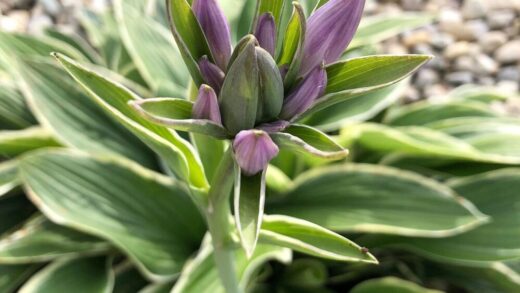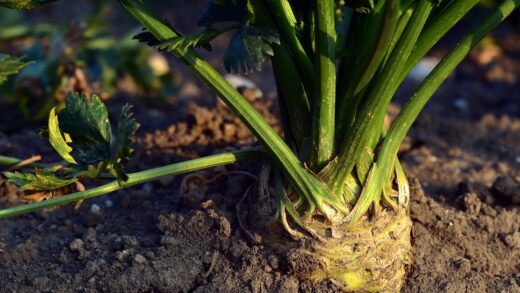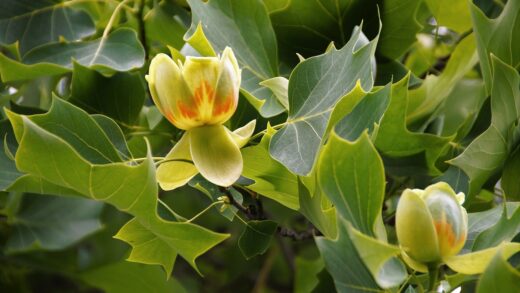The sloe is a testament to the resilience of nature, a shrub that has evolved to thrive in the lean, often challenging soils of wild landscapes. Its nutrient requirements are remarkably modest, reflecting its adaptation to environments where fertile, rich soil is a rarity. For the gardener, this is excellent news, as it means the sloe is a low-maintenance plant that does not demand a complex or intensive fertilization regimen. In most average garden soils, a sloe will grow perfectly well without any supplemental feeding whatsoever. The key to its nutrition is not about adding copious amounts of fertilizer, but about fostering a healthy soil environment that allows the plant to efficiently access the nutrients that are already present.
The philosophy behind feeding a sloe should be one of minimal intervention. Over-fertilization is a far greater risk than under-fertilization for this species. Applying too much nitrogen-rich fertilizer can stimulate a rush of soft, sappy vegetative growth, making the plant more attractive to pests like aphids and more susceptible to damage from wind or frost. This lush foliage often comes at the expense of flowering and fruiting, meaning an overfed sloe may produce fewer blossoms and, consequently, a disappointing harvest of berries. The goal is to support steady, strong growth rather than forcing rapid, weak expansion.
A much better approach to sloe nutrition is to focus on the long-term health and structure of the soil. Incorporating organic matter is the single most beneficial thing you can do. An annual application of a mulch like well-rotted garden compost, leaf mould, or manure around the base of the plant will slowly break down, releasing a balanced range of nutrients in a form the plant can easily absorb. This process also feeds the community of beneficial microorganisms in the soil, which play a vital role in making nutrients available to the plant’s roots. This creates a sustainable, self-regulating system of fertility.
Ultimately, the sloe itself is the best indicator of its nutritional needs. A healthy plant with good leaf colour, steady annual growth, and a reasonable production of flowers and fruit is a clear sign that it is getting everything it needs from the soil. Only if a plant shows clear signs of a nutrient deficiency, such as persistently yellowing leaves or stunted growth in otherwise good conditions, should you consider a direct application of fertilizer. For the vast majority of sloe shrubs, a simple annual mulch is the perfect prescription for maintaining long-term health and productivity.
Understanding the sloe’s modest needs
The sloe’s natural habitat is typically found in hedgerows, woodland margins, and scrubland, areas that are not known for their deep, fertile soil. It has adapted over millennia to be highly efficient at extracting the necessary nutrients from less-than-ideal conditions. Its extensive root system, which can spread far and wide, is key to this ability, allowing it to explore a large volume of soil for water and minerals. This is why it can colonize poor, chalky, or clay soils where more demanding plants would struggle to survive.
More articles on this topic
The primary nutrients required by all plants are nitrogen (N), phosphorus (P), and potassium (K). Nitrogen is crucial for leaf and stem growth, phosphorus is essential for root development and energy transfer, and potassium plays a vital role in flowering, fruiting, and overall plant hardiness. The sloe requires all three, but in modest proportions. Its growth cycle is naturally steady rather than explosive, so it does not have the high demand for nitrogen that a fast-growing vegetable crop would. A balanced supply of these nutrients is all that is needed.
In a typical garden environment, the soil usually contains sufficient reserves of these nutrients to support a sloe plant without any additional inputs. The natural cycle of leaf litter decomposition and the activity of soil organisms constantly replenishes the nutrient supply. This is why it is rare to see a sloe in a garden setting showing signs of a nutrient deficiency. The plant is simply not a “heavy feeder” and is very well-equipped to look after itself, provided the basic soil structure and pH are within its tolerance range.
Therefore, the mindset when considering sloe fertilization should be one of caution. It is far easier to cause problems by adding too much fertilizer than by adding too little. The plant’s inherent thriftiness with nutrients is one of its greatest strengths as a low-maintenance garden shrub. By understanding and respecting this aspect of its nature, you can avoid unnecessary work and expense, and more importantly, prevent the kind of forced, weak growth that can compromise the plant’s long-term health and resilience.
The best approach: organic matter
The single most effective and beneficial way to meet the nutrient needs of a sloe is through the regular application of organic matter. Unlike synthetic chemical fertilizers that provide a concentrated, fast-acting dose of specific nutrients, organic matter works by improving the overall health and fertility of the soil. Materials like garden compost, well-rotted manure, leaf mould, or composted bark act as a slow-release fertilizer, gradually breaking down over many months to provide a steady, balanced supply of all the essential macro and micronutrients the plant requires.
More articles on this topic
This slow-release mechanism is perfectly suited to the sloe’s modest nutritional demands. It prevents the sudden rush of growth associated with high-nitrogen chemical feeds and instead supports the development of strong, hardy wood. Furthermore, organic matter dramatically improves the soil’s physical structure. In heavy clay soils, it helps to bind clay particles together, creating larger aggregates that improve drainage and aeration. In light, sandy soils, it acts like a sponge, helping the soil to retain both moisture and nutrients that might otherwise wash away.
Applying organic matter is best done in the form of an annual mulch. In late winter or early spring, spread a layer of your chosen material, about 5 to 8 centimeters deep, over the soil surface around the base of the sloe. Extend the mulch outwards to the plant’s dripline, but be careful to leave a small gap right around the main stem to prevent rot. The worms and other soil organisms will then do the work of incorporating this organic matter into the soil, gradually building a rich, healthy, and fertile topsoil layer.
This practice not only feeds the plant but also cultivates a thriving soil ecosystem. The organic matter provides food for bacteria, fungi, worms, and other beneficial creatures that are essential for a healthy soil food web. These organisms play a critical role in breaking down complex organic compounds into simple mineral nutrients that the plant’s roots can absorb. By feeding the soil, you are creating a self-sustaining system of fertility that will support the sloe for its entire life.
When to consider fertilization
While most sloe shrubs will never need additional fertilizer beyond an annual organic mulch, there are a few specific situations where a supplemental feeding might be considered. The most common scenario is when a sloe is planted in exceptionally poor or depleted soil. This could be, for example, on a new-build property where the topsoil has been stripped away, leaving only nutrient-poor subsoil, or in a very sandy soil that leaches nutrients rapidly. In these cases, the plant might struggle to establish itself and show signs of poor health.
Clear signs of a nutrient deficiency are the primary trigger for considering fertilizer. The most common symptom is chlorosis, or the yellowing of leaves. If the yellowing is uniform across older leaves, it could indicate a nitrogen deficiency. If the yellowing occurs between the veins of new leaves, it might point to a lack of iron or manganese. Other signs can include stunted growth, where the plant fails to produce a reasonable amount of new shoots each year, or a consistent failure to flower and fruit despite being in a sunny location and of a mature age.
If you observe these symptoms, it is important to first rule out other potential causes, such as poor drainage, water stress, or disease, as these can produce similar signs. However, if the soil is indeed the problem, a balanced, general-purpose fertilizer can be beneficial. Look for a product with an even N-P-K ratio, such as a 10-10-10 granular feed, or opt for an organic alternative like fish, blood, and bone meal. This should be applied in early spring as new growth begins, following the manufacturer’s instructions carefully to avoid over-application.
It is crucial to view this type of fertilization as a corrective measure rather than a routine task. One application in the spring is usually sufficient to address the deficiency. After applying the fertilizer, it is still highly recommended to follow up with a good organic mulch, as this will help to build the soil’s long-term fertility and reduce the need for future interventions. The goal is always to return the plant to a state where it can be supported by a healthy soil ecosystem rather than becoming dependent on regular chemical inputs.
What to avoid in sloe nutrition
When managing the nutrition of your sloe, there are several common practices that are best avoided, as they are more likely to cause harm than good. The most significant thing to steer clear of is the overuse of high-nitrogen fertilizers. Products designed for lawns or heavy-feeding vegetables, which are rich in nitrogen, are entirely unsuitable for sloe. As mentioned previously, this will force a large amount of weak, leafy growth that is attractive to pests and reduces the plant’s focus on producing the flowers and fruits that are often the reason for growing it.
You should also avoid the practice of “little and often” feeding with liquid fertilizers throughout the growing season. This approach is designed for container plants or bedding displays that have a high and constant demand for nutrients in a limited volume of soil. For a shrub like the sloe, which is planted in the ground, this is unnecessary and can lead to a build-up of salts in the soil and promote shallow rooting. The plant is much better served by the slow, natural release of nutrients from an organic mulch.
Be cautious about applying fresh, un-rotted manure directly around the base of the plant. While well-rotted manure is an excellent soil conditioner, fresh manure is very high in ammonia and can “burn” the plant’s roots, causing significant damage. It can also introduce weed seeds and potential pathogens. Any manure used should be left to rot down for at least six to twelve months until it is dark, crumbly, and has an earthy smell before it is applied as a mulch.
Finally, avoid the temptation to constantly amend the soil to try and create the “perfect” rich loam. The sloe is not a fussy plant and has adapted to thrive in average conditions. Digging around the base of an established plant can damage its shallow feeder roots, and constantly altering the soil chemistry can disrupt the delicate balance of the soil ecosystem. The best strategy is to work with what you have, using a simple annual mulch to gradually improve the soil’s health and structure over time. This gentle, patient approach is perfectly in tune with the needs of this hardy and resilient shrub.

















